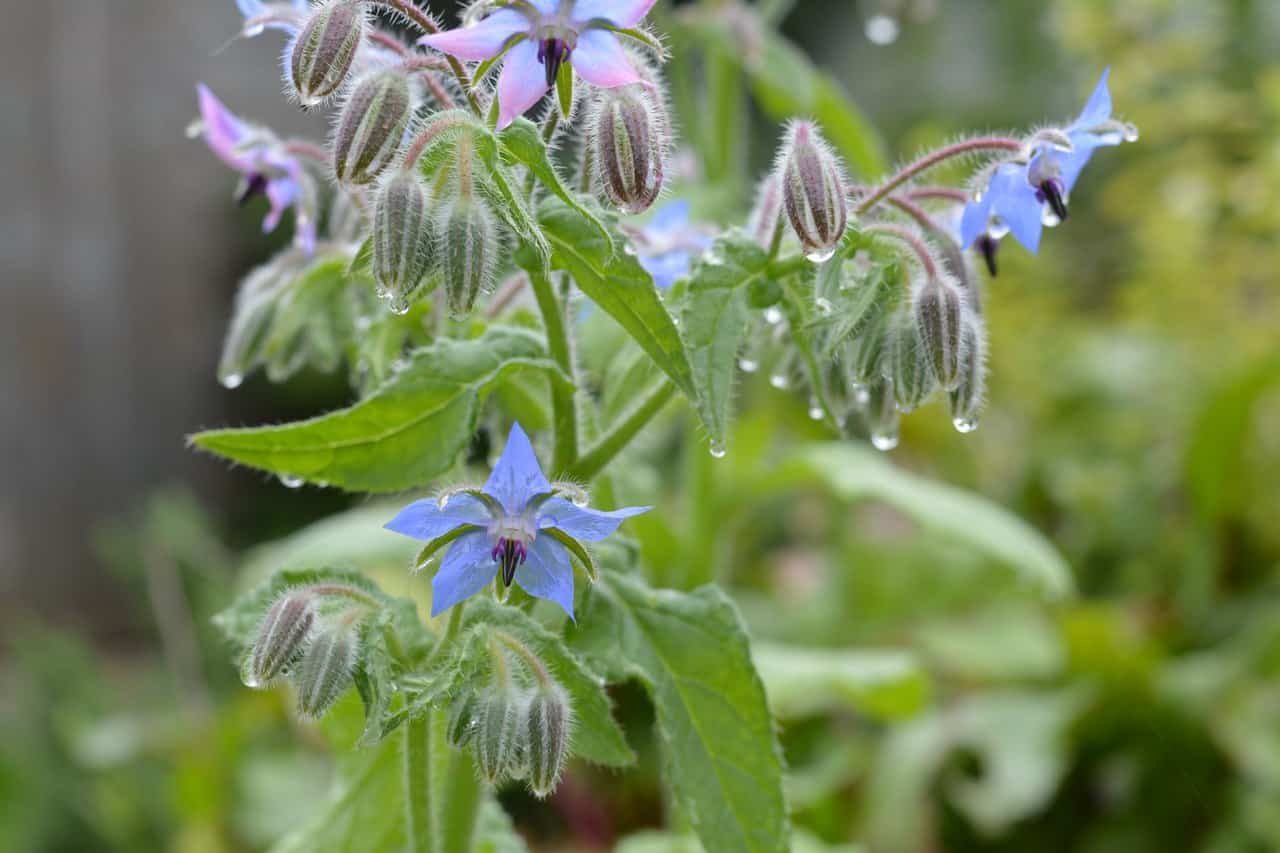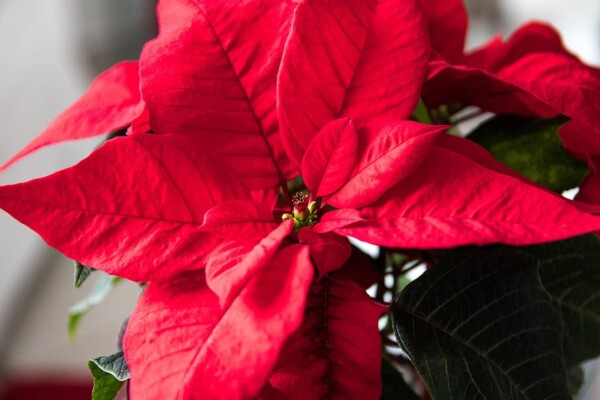When you take a look over your garden, you might notice foreign plants growing without your involvement. Your first reaction would be to remove them because they might be dangerous for the other plants or because they take away from your garden’s shine. We are here to stop you!
Those herbs might be the new celebrities in your food. Do not fall into the trap of disregarding weeds. They are more valuable than most of us might think. In this article, we will teach you how you can help your planet by reducing waste and show you the science behind the most common edible weeds you must have in your garden.
But first off, what are weeds? In simple terms, weeds are those plants that grow without human intervention or desire and are often considered toxic for the plants around them.
But are they edible? Well, not all of them, of course, but you can use many weeds as food or even medicine. The rule is to make sure you identify the plant correctly. Many poisonous weeds are similar to those edible weeds, so you have to be very careful when selecting the good from the bad.
In addition, people sometimes spray the weeds with herbicides that are toxic to the human body, so even if they’re edible you have to make sure they haven’t been sprayed with any bad herbicides. Now let’s dig into the subject at hand.
Here are the 25 most common edible weeds that you might find in your yard or plants that you might want to grow in your garden.
25. Bittercress (Cardamine Hirsuta)
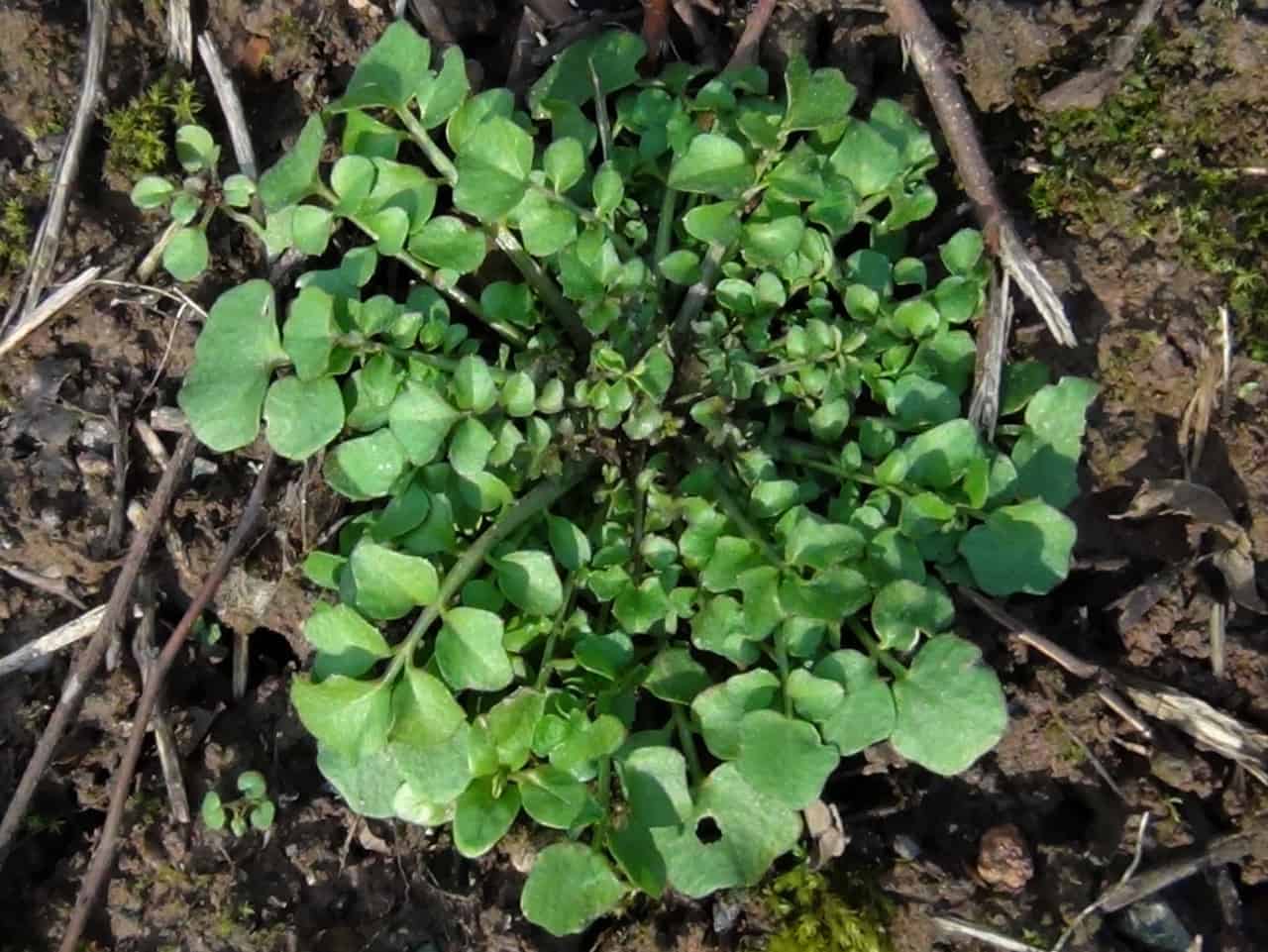
One of the most common plants in our gardens is the Bittercress, a low-growing rosette, part of the mustard family, with a very similar taste as its siblings. The edible parts are the leaves, the seeds and the flowers, but the testiest part is the leaf. The name comes from the flower that can sometimes taste bitter. The plant contains vitamin C, magnesium, beta-carotene, antioxidants and calcium.
The plant loves the cold but grows in warm-mild regions. It is often eaten in salads, as cooking removes the intense flavour it has. You can identify the plant by looking at the place where it grows. It usually grows in a cluster with shoots covered by white flowers. We do not recommend storing the plant.
24. Chickweed (Stellaria Media)
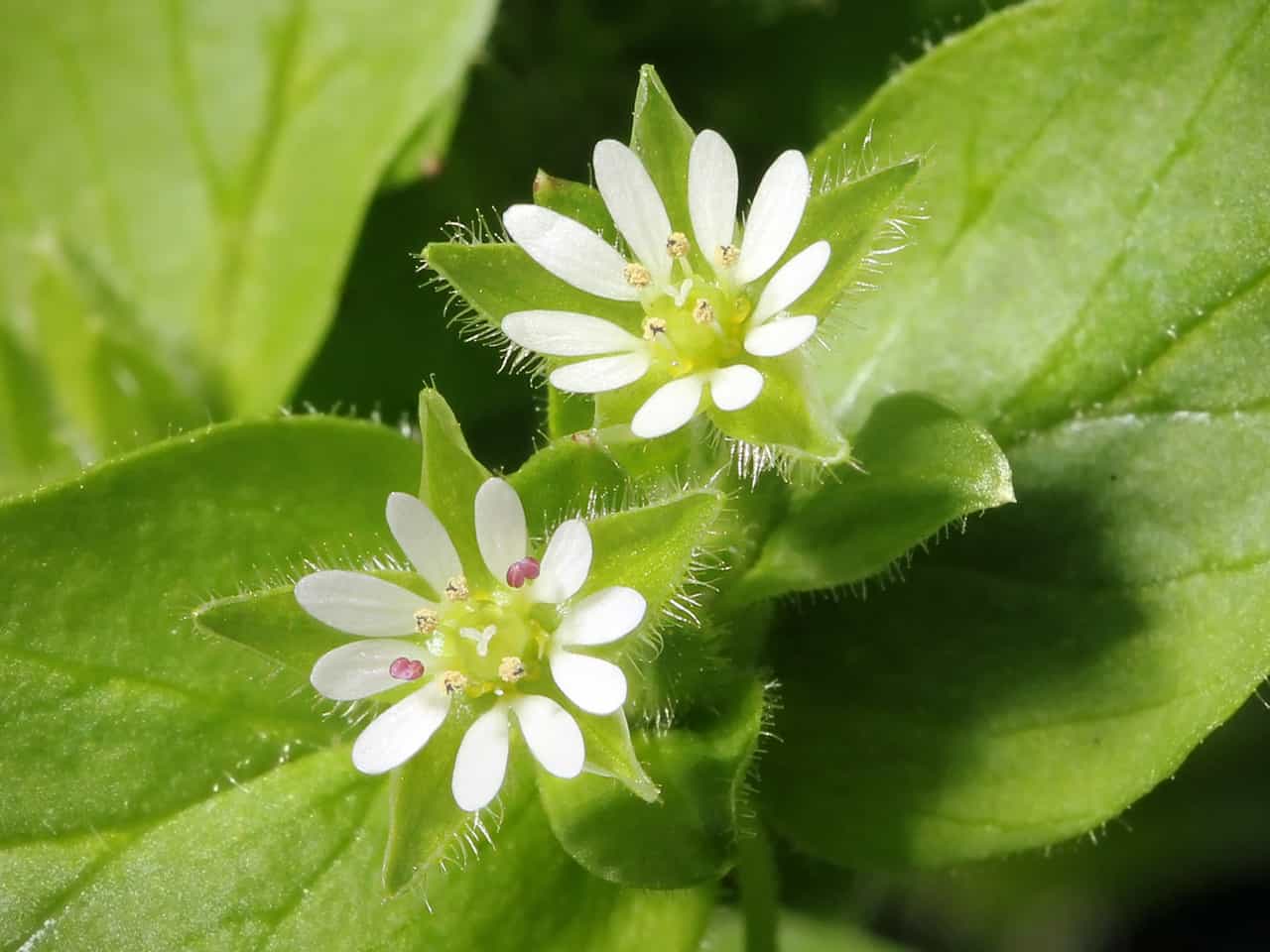
This plant is remarkably valuable as almost every part of it is edible (leaves, flowers, seeds, stems). The taste is similar to corn silk and grows from fall to spring, loving chilly weather. Similar to the plant above, chickweed grows in clusters, and you will need several plants for a single meal. You can eat it raw or incorporate it into a pesto recipe or cook it with other edible weeds. It is rich in vitamin A, vitamin C, and calcium.
Be careful! The plant can be toxic for some animals if consumed in large quantities (horses) and can be confused with radium weed. Radium weed is poisonous and grows in similar conditions. It is better to consult an expert before consuming.
23. Dandelion (Taraxacum officinale)

The dandelion is the yellow plant we all find in our garden or simply growing in the green spaces in the city. The thing you did not know is that you can eat the whole plant! The roots are great for tea, and they have a bunch of health benefits. The flowers are good for jelly and wine, while the leaves work great in soups and salads, especially those from younger plants.
The dandelion is edible all the time, as the greens are good in the early spring, flowers between spring and summer and roots all year round. Dandelions have vitamin A, vitamin C, vitamin K, vitamin E, vitamin B complex, K, iron, Mg. Be careful to wash the plant before consuming it.
22. Violets (Viola spp.)
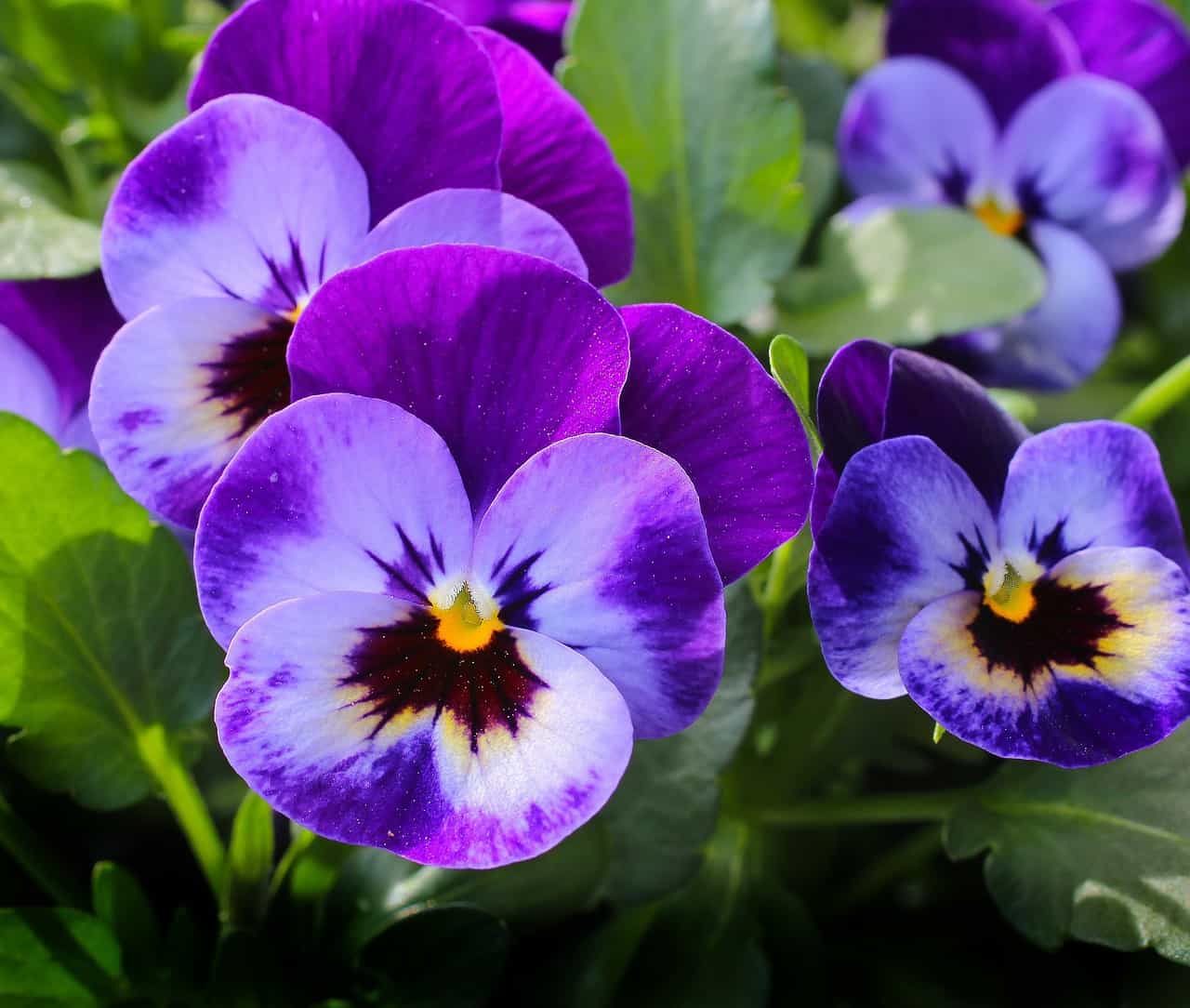
Sugary-flavoured plants, violets are not only delightful at sight but also taste. Chefs use the small, purple flowers to decorate cakes and candies, and people use them for jams, syrups, or tea.
Besides the delicious dishes you can cook using the flowers, they have medical purposes, too. However, the roots and seeds are toxic and should not be eaten. The leaves and the flowers contain vitamin C.
21. Garlic Mustard (Alliaria petiolata)
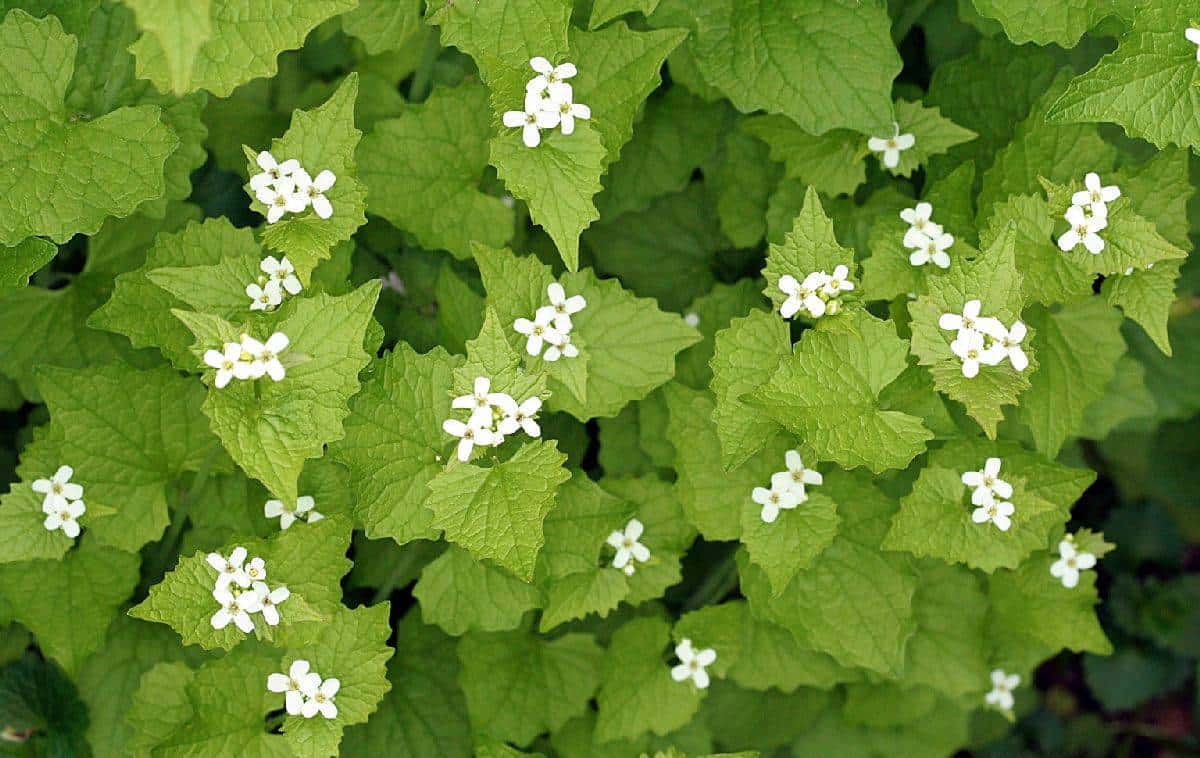
While Garlic Mustard is a hard plant to harvest, if you manage to do it, you will be the lucky eater of a whole, nutritious plant. The plant should be harvested when young and when it is not too hot outside. If you lay your hands on a good garlic mustard plant, you will taste something similar to mustard and garlic, a spicy flavour great for pesto and salads.
You should avoid eating it row too many times, as it contains cyanide, a toxin that does not serve our bodies well. However, the plant is rich in vitamin A, vitamin C, K, Ca, Mg, selenium, iron, omega-3 fatty acids, and many others.
20. Plantain (Plantago Spp.)

If you love the greeneries, you will fall for this weed with a flavour similar to mushrooms. You can consume the leaves and the flowers/seed heads. From fall to spring, the plant offers the best taste. Plantain is tasty in salads and has a variety of nutrients to boost your immune system.
The weed is rich in vitamin C, minerals, antioxidants, oxalic acids, and others. The plant is noticeable by its big, oval leaves surrounding tall spikes, covered sometimes with flowers.
19. Lamb’s Quarters (Chenopodium album)

This plant is a relative of the often consumed quinoa, and it is entirely edible, offering more flavour to your food even in the middle of summer when most greeneries have died. It has a taste similar to spinach, with a bit of a nutty flavour. You can use lamb’s quarters to substitute spinach in any recipe.
This plant loves the warm months, and you will find it in most gardens, having very little pretensions on the soil. People often get rid of this plant due to its ugly appearance. It can grow very tall and has oval/triangular leaves, and at the top of the plant, there is a pop of blue-green. You will find protein, fibre, vitamin A and vitamin C in this weed.
18. Wood Sorrel (Oxalis spp.)
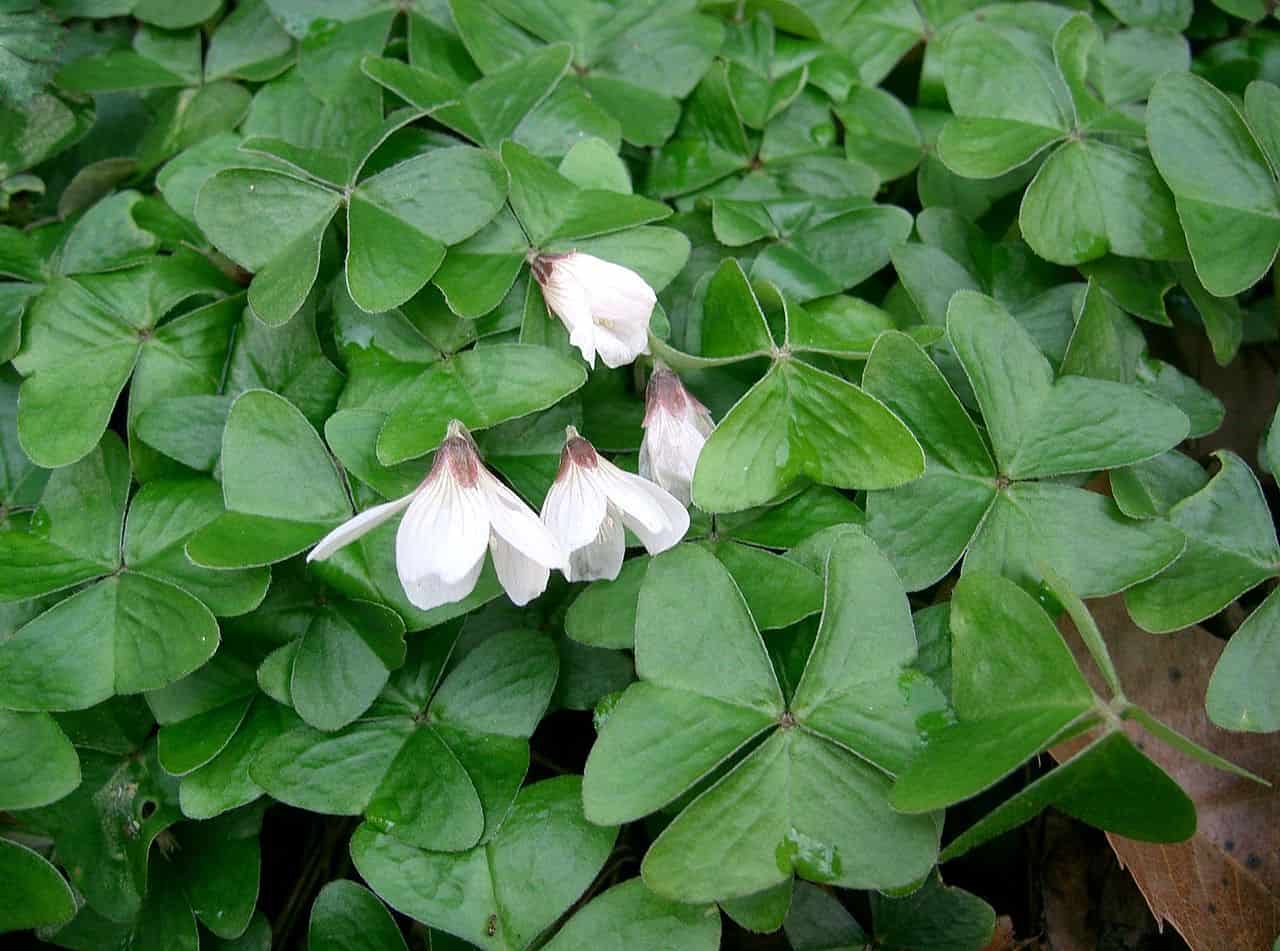
You can eat the flowers and the leaves of this plant. Wood Sorrel looks like clover and tastes like sheep sorrel, but it is not part of their families. The taste of this plant is citric, and you can feel the acidic flavour on your tongue. You can play around with this ingredient in salads, soups, sauces.
However, specialists do not recommend the plant to those suffering from arthritis or kidney stones and advice people to eat moderate amounts. This weed is full of vitamin C.
17. Curly Dock (Rumex Crispus)

Curly Dock has edible leaves. It has a tangy-spinach flavour in the colder times and a bitter taste when it is warm. It is a huge plant, growing big both above and under the ground. You can eat the leaves raw when the plant is young, or you can cook them.
Curly Dock contains more vitamin C than an orange. Therefore, you must be careful when you consume it and change the water several times when cooking.
16. Wild Garlic (Allium Vineale)
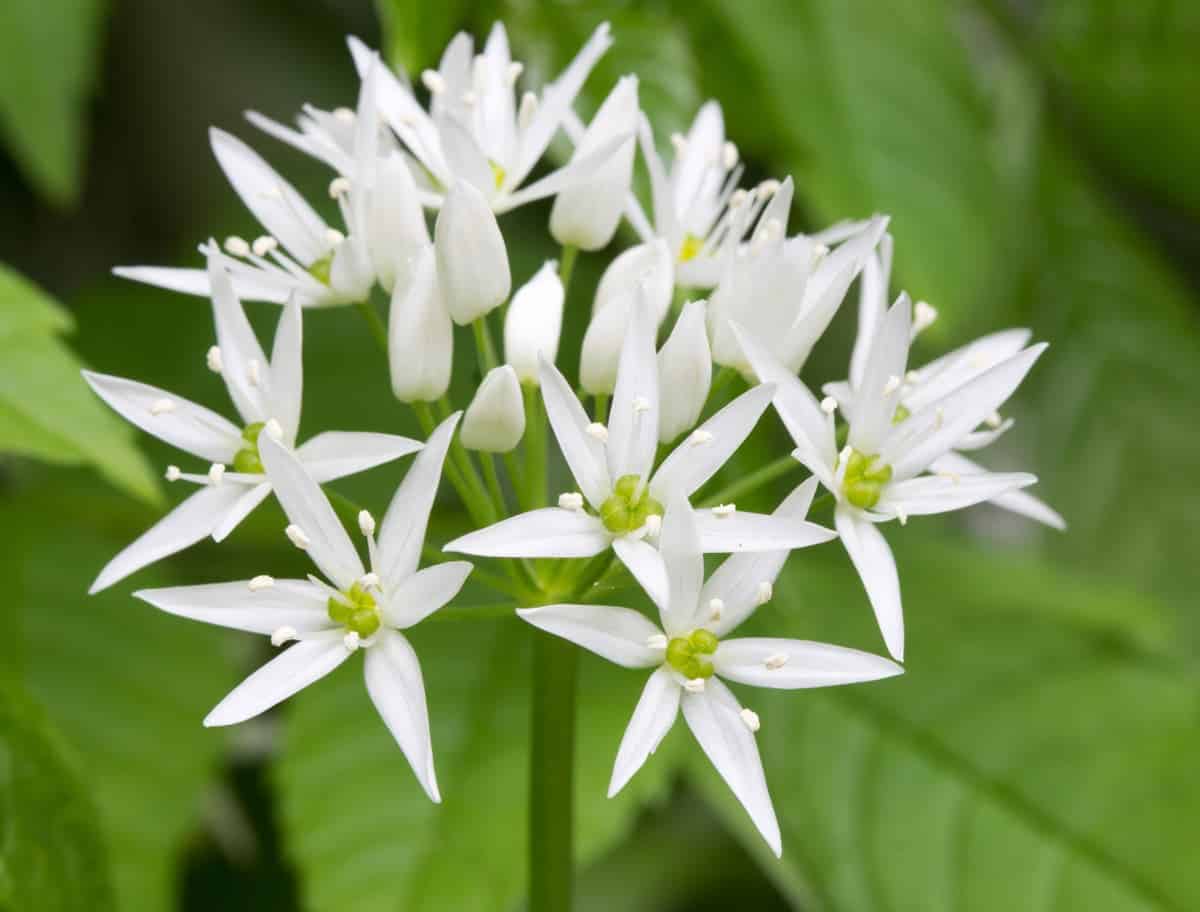
The edible parts of wild garlic are the flowers, leaves, bulbils and bulbs. The plant is similar to a wild onion but tastes, of course, like garlic. You can cook wild garlic in many ways. You can pickle the bulbs and bulbils, use the leaves and other parts in soup, stocks and stews.
The authorities consider wild garlic a toxic weed because it spreads uncontrollably and can hurt some animals. However, it is edible for humans, and we can participate in eradicating it by eating the plant. Wild garlic has magnesium and iron.
15. Stinging Nettle (Urtica Dioica)
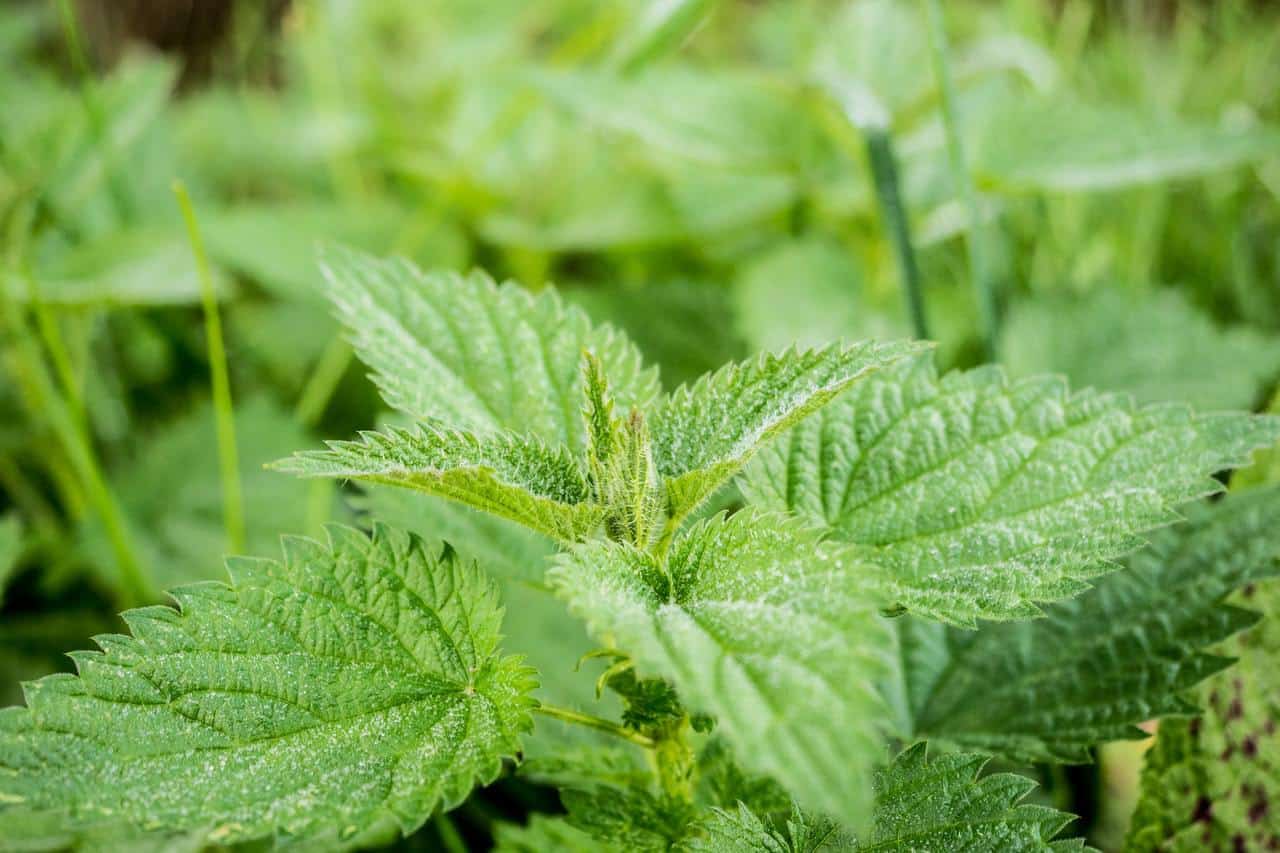
When raw, the leaves of stinging nettle stings the skin and creates an itchy sensation or a rash. Therefore, the process of picking it might be a little tricky, but it is totally worth it. The taste is similar to spinach, and you can use them in soup, on pizzas or salads.
You can also make a delicious fresh or smoothie with stinging nettle and citrus without cooking it before. This well-known weed is a rich source of vitamins (A and C), sodium, iron, calcium and fatty acids.
14. Sheep Sorrel (Rumex Acetosella)
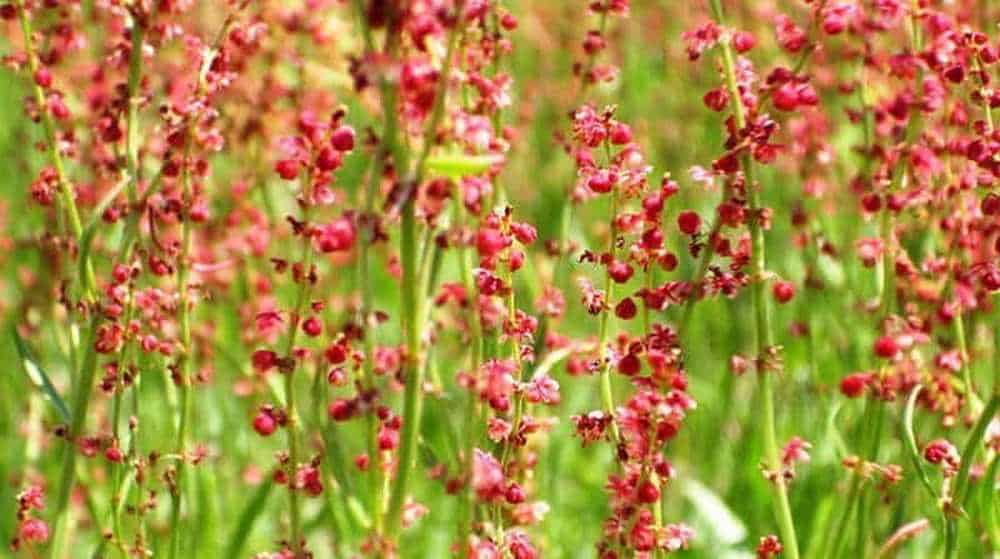
This weed has an unusual taste. It is close to a citrus flavour but has some bitterness that changes the overall taste. The leaves are exceptional in salads or cooked in soups, while the seeds are good both raw and cooked. However, you should limit the consumption of this weed.
To us, sheep sorrel is a reminder of lemon and you can use it as a substitute for lemon flavour in some recipes. The best time to eat sheep sorrel is when the plant is still young.
13. Purslane (Portulaca Oleracea)

This delicious plant can grow anywhere, as it has very little pretentious on soil and accepts the poorest conditions. The weed has an acidic flavour and feels a little crunchy. In addition, purslane is a great soup thickener.
Purslane looks like a small succulent plant, growing close to the ground. Your chickens will also love it, but it is toxic to cats and dogs. This weed includes omega-3 fatty acids, antioxidants and vitamins (especially E and C).
12. Pigweed Amaranth (Amaranthus Spp.)
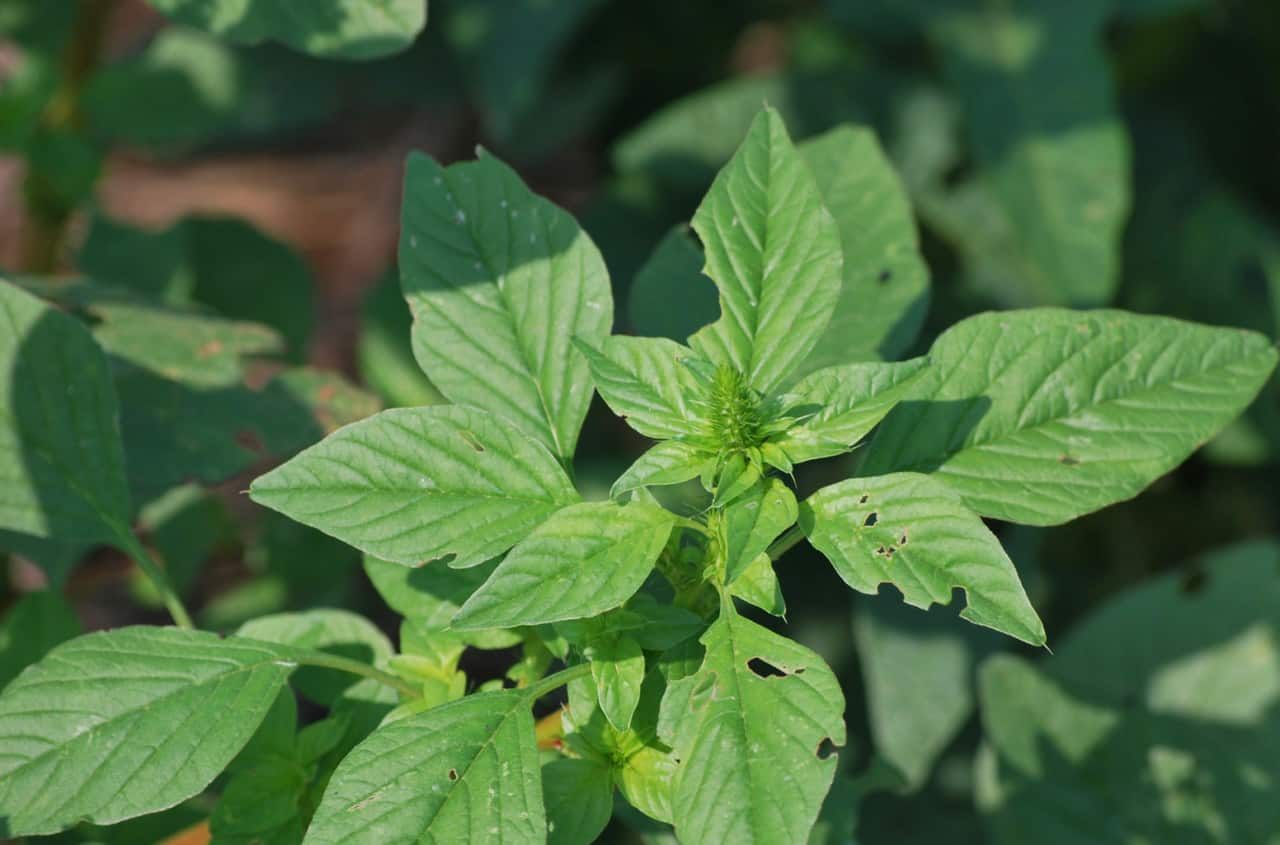
Pigweed, or amaranth, is a weed with a salty, lemon-like taste. The leaves are edible and are best young, but old ones are also good when dried or cooked. The seeds and flower shoots are nice snacks or ingredients in various foods.
The plant is hated by farmers and authorities, and even if they tried to eradicate it with all kinds of herbicides, pigweed is still growing strong. Even more, it became immune to most substances out there. Rather than trying to poison pigweed, we recommend eating it. The plant loves the warm weather.
11. Japanese Honeysuckle (Lonicera Japonica)
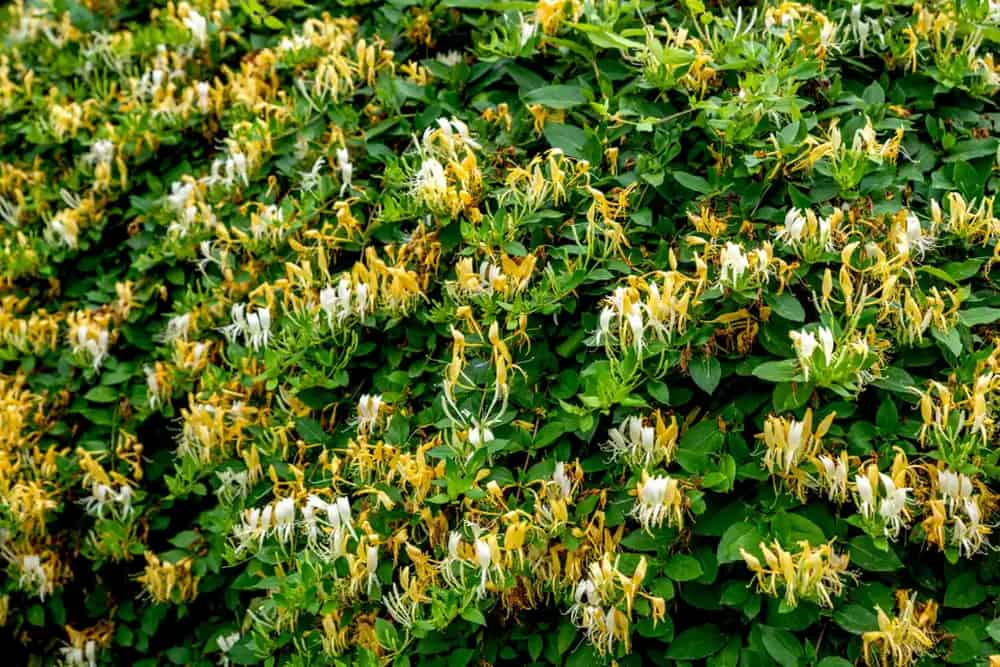
This weed has edible flowers and has delicious nectar and a delightful smell. You probably remember these flowers since you were a child but now, as an adult, you can cook incredible recipes with sweet nectar.
The most common recipe is sparkling honeysuckle cordial. All you need is honeysuckle flowers, water, lemon juice (citric acid), and organic cane sugar. Place one cup of flowers in a glass jar and add one cup of sugar, three cups of water and a couple of teaspoons of lemon juice. Cover the jar with a paper towel and secure it with a rubber band.
You must stir the mixture at least twice a day. After a week, you can strain off the flowers and you will be left with an effervescent mixture. Put the mixtures in bottles and place them in the fridge. It can last up to one year.
10. Henbit (Lamium Amplexicaule)
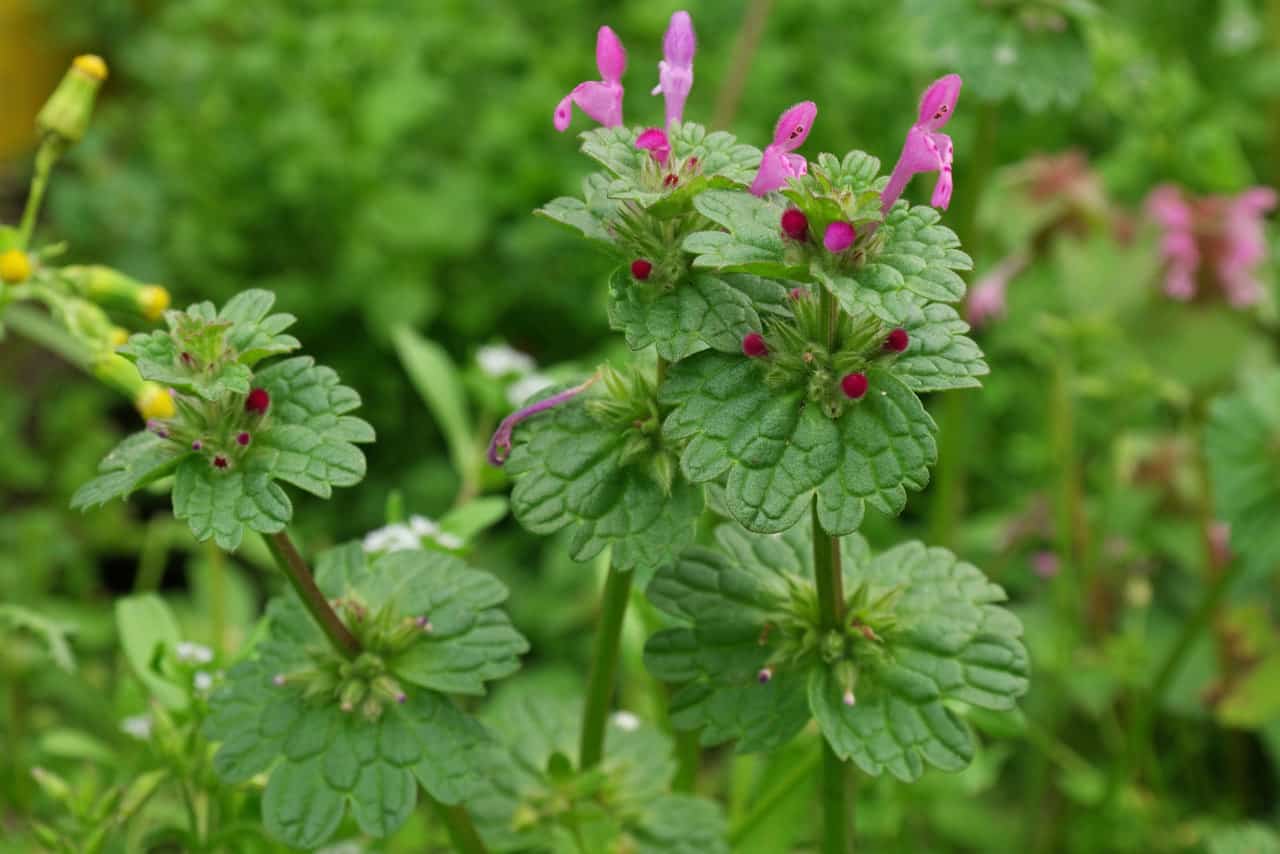
Henbit is part of the mint family, but the weed is very different from the mint. You can eat the leaves, stems and flowers.
The taste is similar to mushrooms, but a lot grassier. Sometimes it can taste like celery and pepper. The plant grows in the late winter and early spring.
9. Dead-Nettle (Lamium Purpureum)
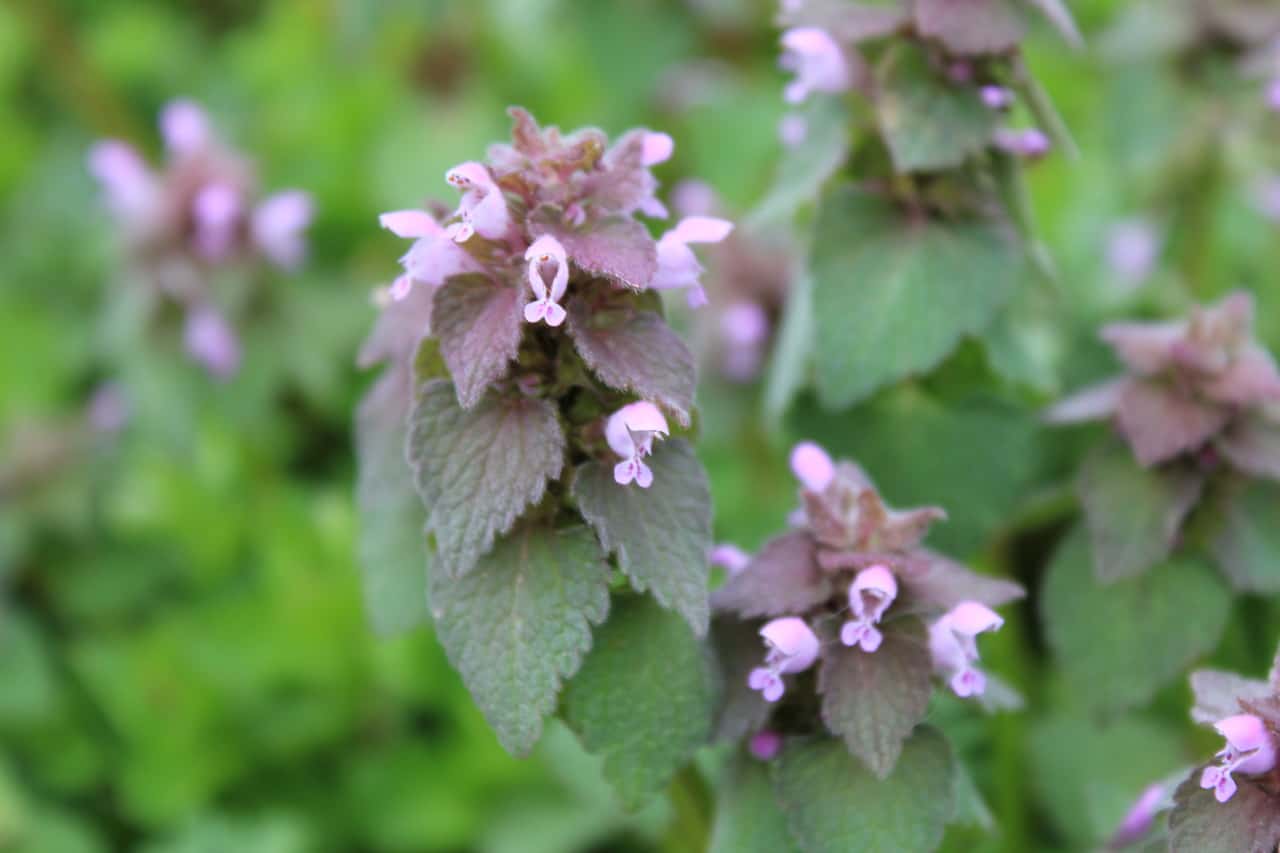
This weed has edible leaves, flowers and stems. You can add the plant in salads, or cook them as you would cook any green plant.
The taste is quite grassy and similar to mushrooms. The plant loves cool weather and blooms in late winter and early spring.
8. Mallow (Malva)
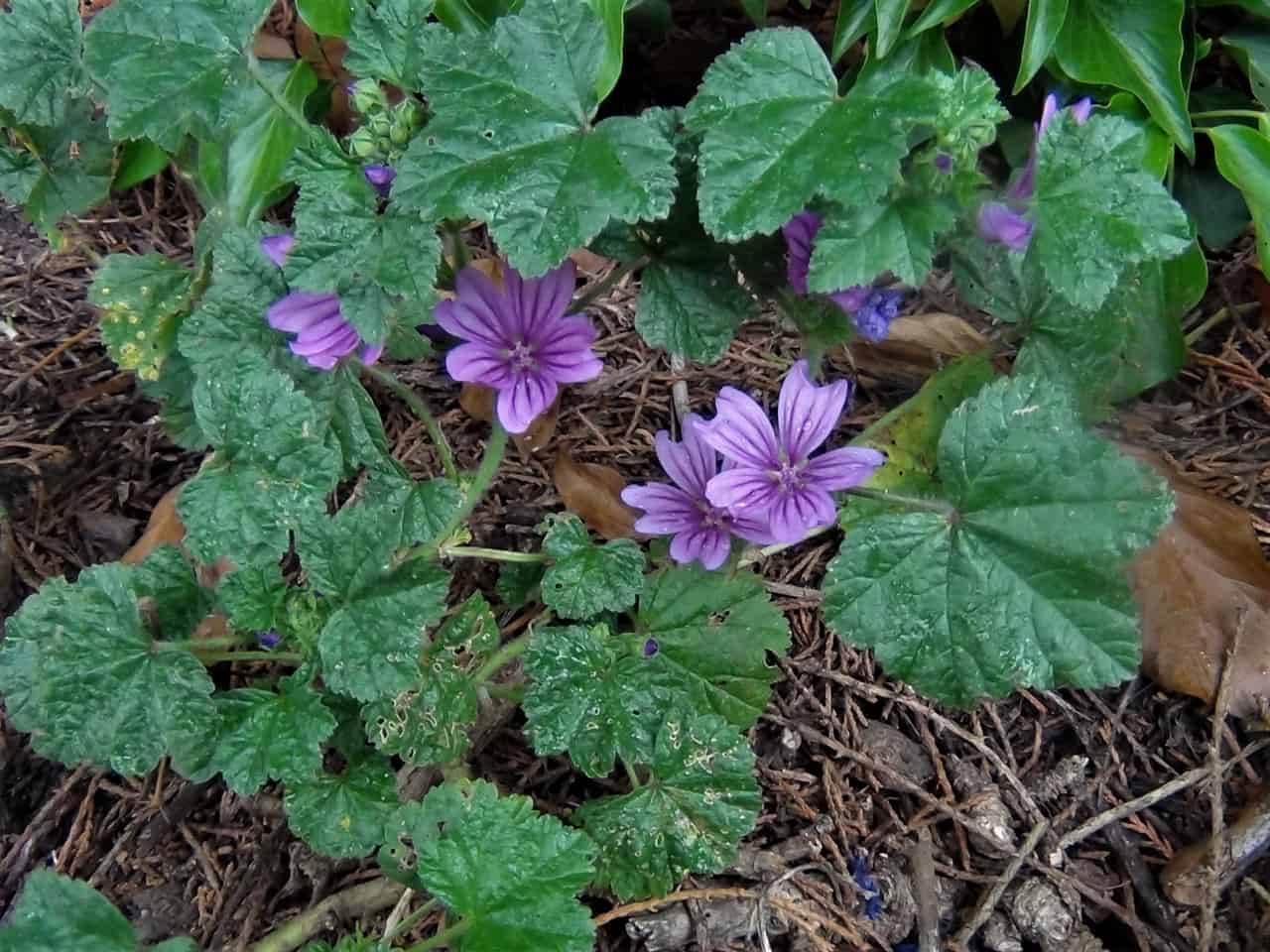
Not only this plant is edible, but it also has great medical properties. The leaves are soft and the fruit is similar to capers. When you boil the leaves, they secrete mucus that can substitute egg whites or soup thickeners.
You must be careful with this plant, as it is a prolific grower. It grows even in the poorest conditions. Mallow is rich in protein, carotenoids, and vitamins A and C.
7. Clover (Trifolium)

Clover is not only a good source of food for bees but also humans. The legends say that this plant’s leaves bring luck to the finder. You will find both red and white clover pretty much everywhere.
Clover is a great source of protein, carbohydrates and minerals. You can use the flowers to make tea and the leaves for salad. However, make sure not to eat too much raw clover.
6. Pineapple Weed (Matricaria discoidea)

Have you ever thought that a weed could actually taste like pineapple? Well, this one does, and it even smells like it. The plant looks like chamomile, but you will not confuse them because as soon as you touch the leaves, you will feel the pineapple scent.
You can eat the flowers and leaves right away, or you can transform them into tea. Be careful, many people are allergic to pineapple weed!
5. Kudzu (Pueraria montana)

Kudzu is a powerful plant. It will invade without thinking twice about it. That is the reason why people hate it so much, but it actually has many nutritional properties. The plant tastes a little bit like snow peas. You should only eat the leaves, flowers and roots in salads and with eggs, but you should avoid the vine of this plant.
As we have previously mentioned, this plant is invasive, and you should never plant it yourself. You are risking it spreading everywhere, and in some parts, this action is even illegal.
4. Lady’s Thumb (Persicaria maculosa)
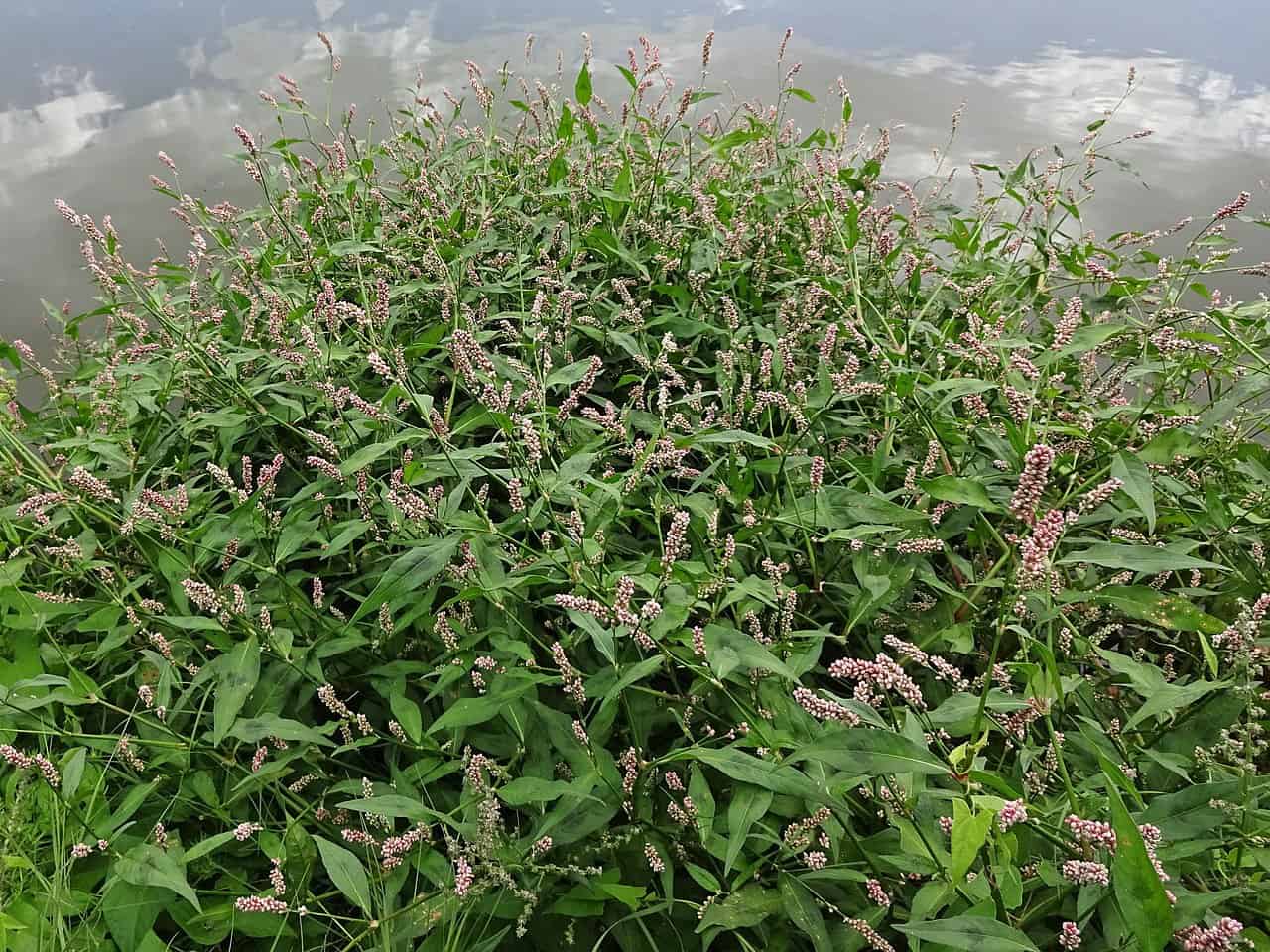
This delicate plant is often used as a medicinal plant, but you can eat it too. Lady’s Thumb tastes very much like pepper, and you can eat the leaves, seeds, flowers, and shoots of this plant.
However, people with kidney ailments should avoid consuming this weed.
3. Borage (Borago officinalis)

Butterflies and bees adore the purple/blue flowers this plant produces. The plant tastes similar to cucumber, and it is one of the weeds that we consider to be delicious. The aspect is really cute, as the flowers look like minuscule stars spread on the ground.
You can consume the leaves and the flowers in salads, soups, cocktails, cakes. If you ever heard of borage seed oil and you would like to consume it, you should talk to your doctor to see if it is safe for you.
2. Milk Thistle (Silybum marianum)
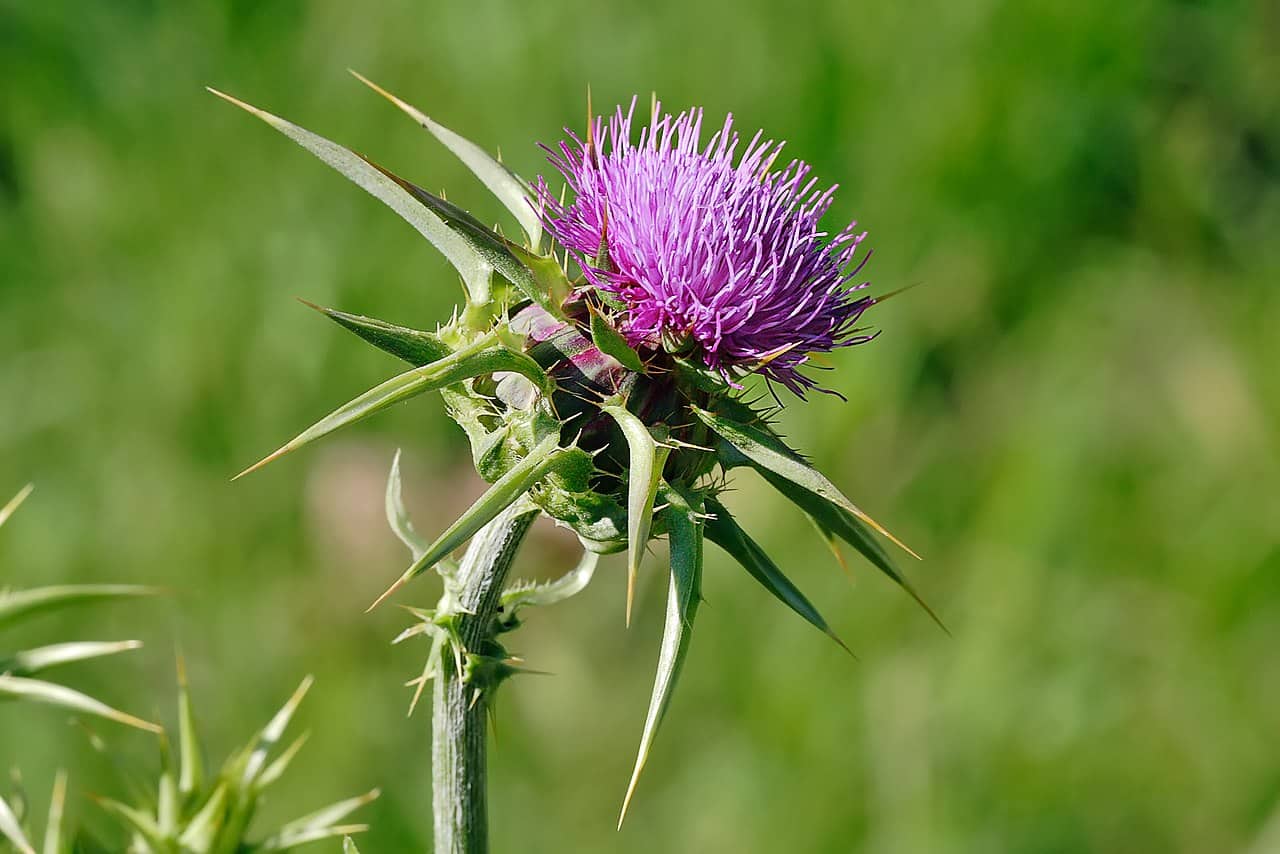
Maybe you noticed that there are many substitutes for spinach growing freely in nature. Milk Thistle is one, too. However, the plant has several medicinal qualities. While raw, the plant has a bitter note to it, when cooked it gets a nice flavour.
You can use the seeds of the plant as an alternative to coffee. You will find this plant as a spiky weed with purple flowers. The spikes of this plant can cause nausea and intestinal issues sometimes, so be careful to remove them before eating.
1. Cleavers (Galium aparine)
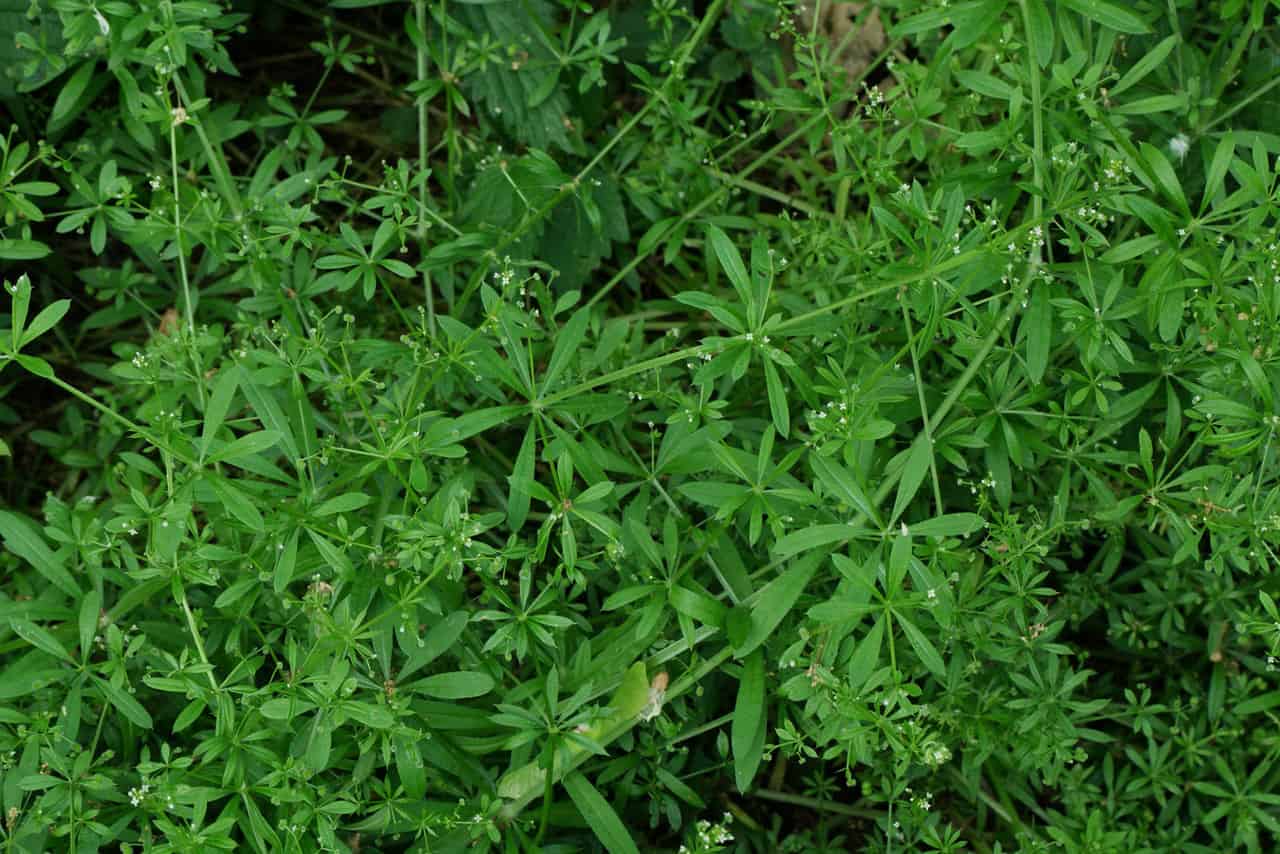
Also named kisses and sticky weed, this plant has gained a reputation over the years. The taste reminds us of pea shoots, and we find it delicious. You cannot miss this strange plant- it has sticky hairs and white flowers. T
o remove the sticky texture, you should cook the plant or in a sandwich, substituting lettuce. Some people develop allergies to this plant.
Conclusion
Weeds are not farmers’ best friends, but the best solution to getting read of some of them is to start consuming the edible ones. We know it might seem strange to take weed out of your garden and put it in your food, but there is nothing wrong with it if you do your research before. Avoid poisoning your yard and yourself, and start reducing the waste! Maybe you will even find your new favourite food.
Contents
- 25. Bittercress (Cardamine Hirsuta)
- 24. Chickweed (Stellaria Media)
- 23. Dandelion (Taraxacum officinale)
- 22. Violets (Viola spp.)
- 21. Garlic Mustard (Alliaria petiolata)
- 20. Plantain (Plantago Spp.)
- 19. Lamb’s Quarters (Chenopodium album)
- 18. Wood Sorrel (Oxalis spp.)
- 17. Curly Dock (Rumex Crispus)
- 16. Wild Garlic (Allium Vineale)
- 15. Stinging Nettle (Urtica Dioica)
- 14. Sheep Sorrel (Rumex Acetosella)
- 13. Purslane (Portulaca Oleracea)
- 12. Pigweed Amaranth (Amaranthus Spp.)
- 11. Japanese Honeysuckle (Lonicera Japonica)
- 10. Henbit (Lamium Amplexicaule)
- 9. Dead-Nettle (Lamium Purpureum)
- 8. Mallow (Malva)
- 7. Clover (Trifolium)
- 6. Pineapple Weed (Matricaria discoidea)
- 5. Kudzu (Pueraria montana)
- 4. Lady’s Thumb (Persicaria maculosa)
- 3. Borage (Borago officinalis)
- 2. Milk Thistle (Silybum marianum)
- 1. Cleavers (Galium aparine)

